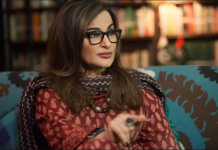Staff Report
ISLAMABAD: India’s economic outlook has weakened again, with worst-case scenario forecasts suggesting the toll from the coronavirus pandemic could be much deeper, stoking fears the job crisis may worsen over the coming year. Renewed restrictions to curb the current coronavirus wave have stalled economic activity, leaving many millions out of work and pushing
economists, who have broadly been bullish, to downgrade their views for the second time since early April, a Reuters poll found. The May 20-27 poll showed the outlook for the current quarter was lowered to 21.6% annually, and to 9.8% on average for this fiscal year, down from 23.0% and 10.4% respectively a month ago. All 29 economists, in response to an additional question, warned the outlook was either “weak and prone to further downgrades” or “fragile, with a limited downside”. None expected a “strong recovery, followed by an upgrade”.
“Therefore new surges of the virus hang above recovery like the sword of Damocles. Until a large share of the population is vaccinated there remains this downside risk of new waves and subsequent lockdowns hampering the recovery,” said Wouter van Eijkelenburg, an economist at Rabobank.
Underscoring concerns that a slow vaccine rollout may make a bigger dent in the economy, the consensus showed in a worst-case scenario the economy would average just 6.8% growth this fiscal year after its deepest ever recession last year. “The threat of further waves will hang over the economic outlook so long as India’s vaccination progress remains lackluster,” said Gareth Leather, senior Asia economist at Capital Economics.
India’s unemployment rate soared to a near one-year-high of 14.73% in the week ending May 23, according to the Center for Monitoring Indian Economy (CMIE), reflecting the impact of the economic slowdown. When asked if there was a risk that India’s unemployment situation could worsen over the coming year, more than 85%, or 25 of 29 respondents, said it was high, including four who said very high.
“There is going to be a significant demand shock to the economy, some of that could be permanent demand destruction, thereby pushing more out of the jobs market and keeping the unemployment rate elevated over the coming year,” said Prakash Sakpal, senior Asia economist at ING.
While calls have increased for more fiscal stimulus to speed up the economic healing, the government has limited space to respond to challenges posed by the health crisis.
“India’s policymakers find themselves between a rock and a hard place when it comes to decisions on additional fiscal stimulus,” said Rabobank’s Eijkelenburg.
Tens of thousands of migrants were seen in wilderness trudging along the highways to reach back their homes as the second wave of COVID-19 this year played havoc with India’s economy.
The country’s national economy declined to 7.3 per cent in 2020-21, a worst recession since independence as coronavirus lockdowns put millions out of work, according to the estimates of Centre for Monitoring the Indian Economy. Around 230 million Indians slipped into poverty trap due to the pandemic last year as study by Bangalore’s Azim Premji University reveals.
In the wake of second wave, around 7.3 million people lost their jobs in April alone (23 crore people earn less than 375 Indian rupees per day that makes $5 a day).
The second wave killed over 160,000 people in eight weeks, prompting further lockdowns. Over 90 per cent of the workforce in India is engaged in the informal sector having no social safety net. Also, millions, for one or other reason, do not qualify for emergency government ratings.
Esther Duflo and Abhijit Banerjee (both Nobel Laureate economists) have expressed serious concerns over falling graph of India’s economy and suggested that government should focus on loans to hard-hit businesses rather than direct cash handouts to susceptible households.
Barclays, British financial services firm in a recently released report pegged the economic const of India’s second wave at $74 billion, or 2.4 percent of GDP.
The experts have a reason to say that the second wave, which dug deep into India’s ill-equipped villages, could spark a fresh crisis among an impoverished population already reeling from last year’s shutdown.




